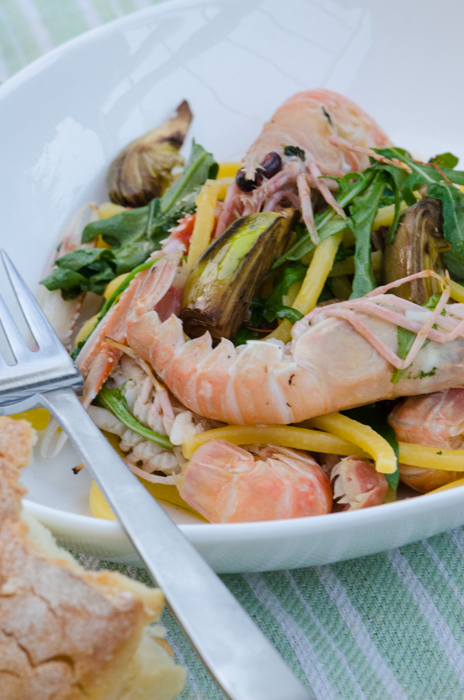 Our April private walking tour brought us from the waters of the Venetian lagoon to the hills of Tuscany – this time of year artichokes are found on menus in both regions. We saw the first blossoms of the carciofo violetto of Sant’Erasmo – the castraure – while in Venice, and were in Tuscany on the 25th of April when the Festa del Carciofo happens in Chiusure, near Siena.
Our April private walking tour brought us from the waters of the Venetian lagoon to the hills of Tuscany – this time of year artichokes are found on menus in both regions. We saw the first blossoms of the carciofo violetto of Sant’Erasmo – the castraure – while in Venice, and were in Tuscany on the 25th of April when the Festa del Carciofo happens in Chiusure, near Siena.
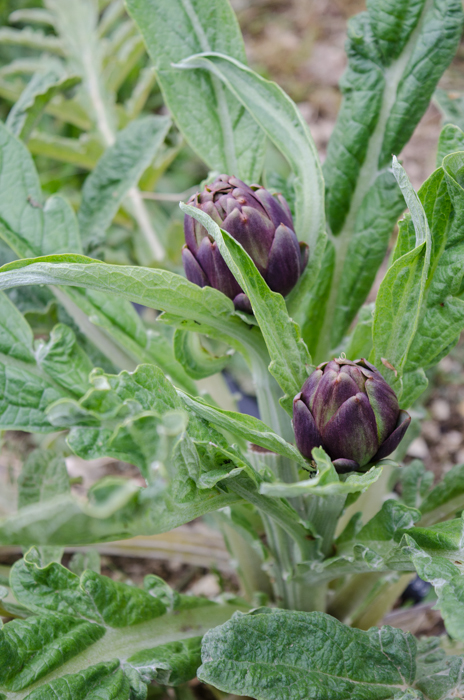 Unlike in the US, where we see only one variety of artichoke, in Italy you will see many varieties as you move from region to region, with different growing seasons and many different preparations. Some can be enjoyed raw, but there are many other ways to enjoy them – braised, fried, poached in oil.
Unlike in the US, where we see only one variety of artichoke, in Italy you will see many varieties as you move from region to region, with different growing seasons and many different preparations. Some can be enjoyed raw, but there are many other ways to enjoy them – braised, fried, poached in oil.
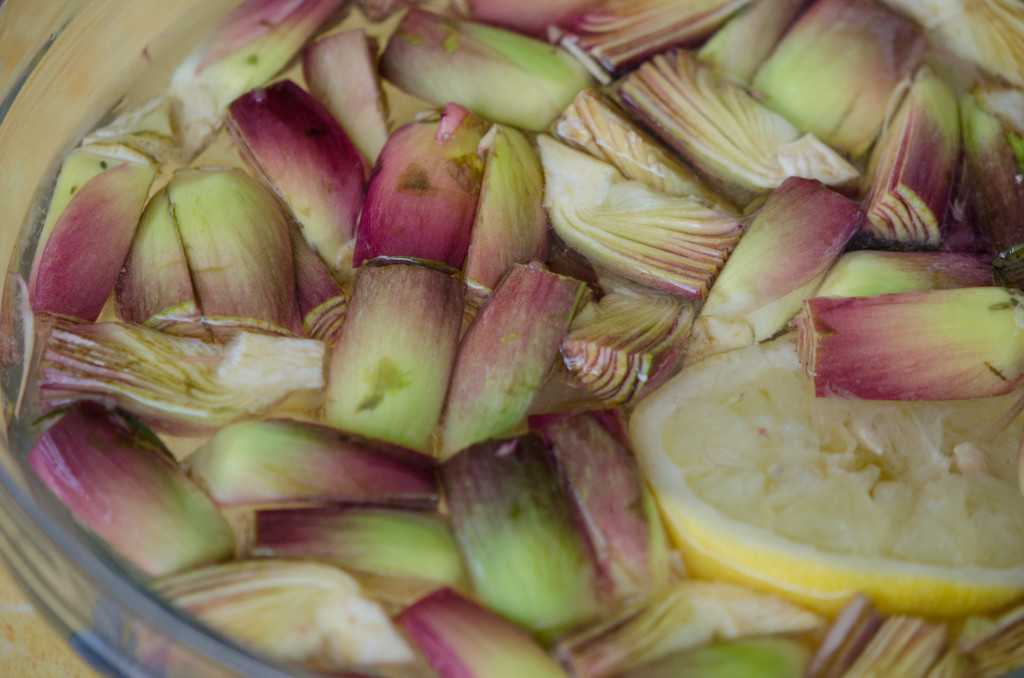 Italian cuisine is filled with legends about the origins and purported benefits of traditional dishes, especially a plant a unique as this one! The artichoke supposedly arrived in ancient Rome from Greece and Egypt. It was considered an aphrodisiac and was thought to ensure male children. According to legend, Jove, the father of all gods, fell for a young girl with blond hair, Cynara, who did not return his affections. As punishment, Jove transformed her into a spiny plant, the artichoke, hence its botanical name Cynara scolymas.
Italian cuisine is filled with legends about the origins and purported benefits of traditional dishes, especially a plant a unique as this one! The artichoke supposedly arrived in ancient Rome from Greece and Egypt. It was considered an aphrodisiac and was thought to ensure male children. According to legend, Jove, the father of all gods, fell for a young girl with blond hair, Cynara, who did not return his affections. As punishment, Jove transformed her into a spiny plant, the artichoke, hence its botanical name Cynara scolymas.
The Italian name, carciofo, comes from the Arabic word for the plant, al-kharsuf, “the plant that stings”, who introduced the plant into the cuisine of Southern Italy. However, its use was limited on Medieval tables as it was believed to cause demonic temptation in young girls.
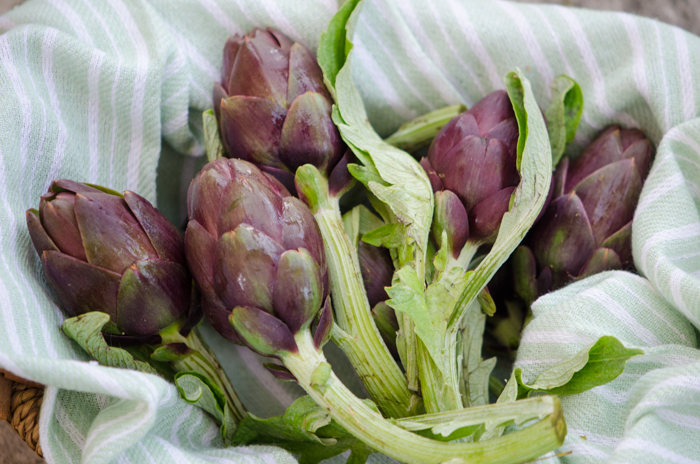 In 1446, Filippo Strozzi, a Florence banker and rival to the Medici family, brought artichoke seeds from Naples to Tuscany, and from there the cultivation spread across the rest of the Italian peninsula. In the Renaissance, the juice of the artichoke was administered as a pregnancy test: “Give a woman artichoke juice, if she vomits, she is pregnant.” Caterina de Medici was very fond of artichokes, and she brought them with her to France in 1533, when she married the heir to the French throne.
In 1446, Filippo Strozzi, a Florence banker and rival to the Medici family, brought artichoke seeds from Naples to Tuscany, and from there the cultivation spread across the rest of the Italian peninsula. In the Renaissance, the juice of the artichoke was administered as a pregnancy test: “Give a woman artichoke juice, if she vomits, she is pregnant.” Caterina de Medici was very fond of artichokes, and she brought them with her to France in 1533, when she married the heir to the French throne.
Here is another recipe from the La Cucina Italiana magazine. Very simple and easy using fresh bought pasta (not tagliatelle, you go with what looks good!), and lovely shrimp from my local fish market.
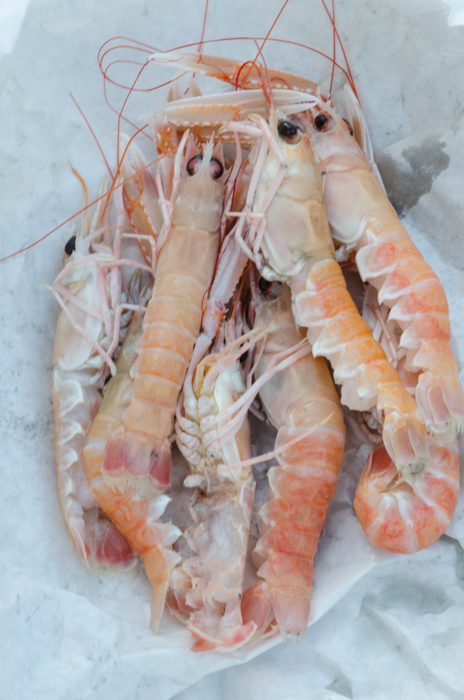
Tagliatelle con Carciofini e Gamberi
1 pound fresh tagliatelle
1/2 lemon
8 baby artichokes
2 tablespoons extra-virgin olive oil, plus more for drizzling
16 large head-on shrimp, peeled and deveined
Coarse sea salt
Freshly ground black pepper
1 large bunch arugula
Bring a large pot of salted water to a boil.
Fill a large bowl with cold water. Squeeze juice from lemon half into the water in bowl, then add lemon half.
Cut off artichoke stems and discard. Cut off top 1/2 inch of one artichoke with a serrated knife. Bend outer leaves back until they snap off close to base, then continue to discard several more layers of leaves in the same manner until you reach pale yellow or purple leaves. Cut off any green tips. Trim dark green fibrous parts from base and sides with a small sharp knife, then cut lengthwise into sixths. Put the pieces in the lemon water. Repeat with remaining artichokes.
In a large skillet, heat oil until hot but not smoking. Add shrimp; cook, turning occasionally, until opaque and cooked through, about 3 minutes; season with salt and pepper. Remove from heat.
Drain artichokes. Cook pasta in the boiling water until al dente, about 3 minutes. Reserve 1/4 cup pasta cooking liquid, drain pasta and transfer to a bowl. Immediately toss with pasta cooking liquid, arugula and half of the artichokes. Divide the remaining half of the artichokes onto 4 serving plates, and fan out toward rim. Divide the pasta among plates, top with shrimp, drizzle with oil, season with salt and serve immediately.
